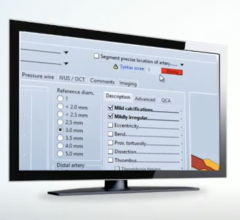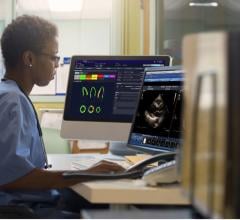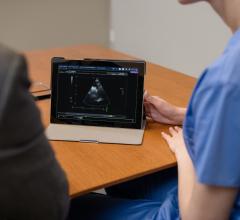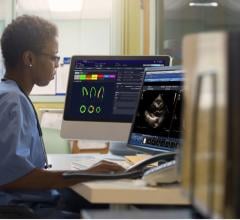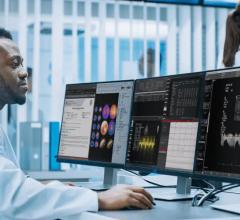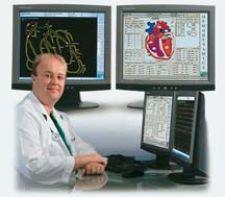
HeartSuite Hemodynamics by Camtronics
A trend is emerging in cardiovascular image and information systems designed for the cath lab and was apparent on the exhibit floor of ACC.06, the 55th Annual Scientific Sessions of the American College of Cardiology, in March.
Leading-edge manufacturers are emphasizing a new dimension to systems that already offer doctors a broad spectrum of scheduling, inventory management, reporting, case — and, of course, PACS image — reviewing, and overall thorough data collection of all billable events and activities. To these features, hemodynamic and/or physiologic data collection, viewing and storing now comprise an important CVIS tool.
Diagnostic & Invasive Cardiology noted three companies that have pulled ahead with this advance: Camtronics (now owned by Emageon), McKesson and Witt Biomedical (purchased this year by Philips).
In addition to the inclusion of hemo data, the companies are also placing heavy emphasis on extreme user ease and configurability — Witt has coined the phrase user-centric. Whereas the CVIS is designed to enable practitioners to remain highly patient focused, the tools themselves underscore simplicity for the doctors and nurses who use them.
Expert Insights
IT consultant and member of DAIC’s editorial board Alan Smith concurred with these conclusions. He dialogued with DAIC editor Kim Phelan about the arrival of hemo into the CVIS, as well as additional key elements in the evolution of CVIS and its relationship to the Electronic Medical Record.
DAIC: What's the significance of adding the hemo dimension to the CVIS for the cath doctor?
Al Smith: Inclusion of hemo means one system for imaging as well as hemo. This means the clinicians only need to learn one system — which reduces the learning curve. They have one sign-on (default single sign-on), they have to get used to one system’s screen flow, and they have access to all cardiac cath related information in one place, available to them at any point in time. [It’s important] to provide all cardiac related information in one CVIS regardless of modality — the hemo piece is one portion of this puzzle that [you want] to include. From an IT perspective this means fewer vendors to work with, fewer interfaces to support, one technical infrastructure to support and a reduction in total cost of ownership.
DAIC: Vendors are emphasizing extreme user ease and configurability with their new hemo/cath IS products. Can you comment on specific attributes that actually make this claim true?
Al Smith: Some of the older generation systems were hard to use (often character based) and the learning curve was pretty steep. The newer systems are trying to have the look and feel of the Web so there are lots of hyper links, and they are much easier to navigate.
The basic functionality of the system may not have changed that much but the user adoption is higher. I have found that doctors are a tough crowd to get to create their reports online unless the system is relatively easy to use. There will always be a few early adopters who will use a clunky system, but the majority need and want a relatively smooth and easy user interface.
One of the goals of a CVIS should be to get the M.D.s to create their reports online so that both the transcription costs and the lag time to get the report transcribed can be eliminated, making the information more readily available. Voice recognition would be another alternative that accomplishes these two goals as well.
DAIC: What other important features have you noticed that are emerging in these systems?
Al Smith: (1.) Multimodality. In the past, a vendor would have one product for echo, one for cath, one for ECGs and another for hemo, or you had to get multiple vendors in place for each of these. [Today] the vendors are all trying to provide a single integrated solution across the cardiology enterprise. A couple are getting pretty close I believe.
(2.) Reporting on the image. The ability to mark parts of an image, make a notation and have that appear in the report is nice. If other M.D.s see the image they can see the comments tied directly to the area in question.
(3.) Security. Biometrics are a nice way to have the clinicians log into the system. Single sign-on that works with the EMR and other applications that M.D.s use will be critical. I know of several cardiologists who have eight to 10 logins for different practice and hospital systems. If they can log on one place and have the different applications pass this information along that would be optimal. It’s more of a satisfaction issue than anything else.
(4.) Integration with other applications. Integration with radiology PACs (Nuc Med and CT images) as well as EMRs will be important. No one wants to store the images in two systems, but an M.D. should have access to the cath image from the EMR if [(s)he] needs it. This is typically done through an Application Programming Interface (API) between the two
vendors that allows authentication as well as context sharing between the two applications.
Vendor Highlights
Camtronics: HeartSuite Hemodynamics
Part of a family of enterprise solutions for cardiology, HeartSuite Hemodynamics combines with the HeartSuite VERICIS filmless network to create a CVIS that improves workflow and efficiency in the cath lab, the
company says.
The system allows users to touch the screen with their finger to drag and drop the selected data element onto the event log. Another claim to fame is HeartSuite Hemodynamic’s shallow levels of data accessibility, meaning that all screens are only one level deep, allowing users to quickly make their data selections and keep up with the progression of the procedure.
Camtronics built the system to be customizable, enabling users to specify the data collected at every point of care. It records more than 200 hours of multiprocedural full disclosure waveform data so that all critical case data is electronically captured and stored.
The system captures pressures, respiratory rate, ECG waveforms and thermodilution cardiac output in multiple formats or simultaneously on one screen. Like a pilot’s pre-flight checklist, HeartSuite Hemodynamics’ on-screen procedural workflow design ensures that required data elements are entered accurately and consistently at all points of care. Every screen is automatically populated with defaulted data fields that are predetermined by the cath lab personnel.
McKesson: Horizon Cardiology Hemo
Expanding its Horizon Cardiology CVIS, McKesson introduced Horizon Cardiology Hemo that corrals patient demographics, hemodynamic waveforms, cardiac images and procedural information seamlessly into one complete cardiac patient record.
The system boasts workflow enhancements that include powerful and intuitive reporting functionality that automates most fields to reduce manual data entry. It also offers flexibility for personalized configuration that fits into the complex cath lab workflow.
Users can perform real-time procedure notes charting as well as modify the real-time customizable vitals chart, including pain status and conscious sedation charting.
The new hemodynamic monitoring system automates the recording and monitoring of a patient’s vital signs and data during a cardiac catheterization procedure, and thus fully completes the patient chart. It can complete up to 90 percent of the final report when integrated with the Horizon Cardiology CVIS. The resulting final hemodynamic report is put into a PDF format and includes all data gathered during the procedure.
Other integration features include tracking of inventory and supplies for each patient procedure to support accurate billing and supply chain management.
Witt Biomedical’s Series V Physiomonitoring
The latest advance in Witt’s physiomonitoring and information systems, Series V pairs with the company’s CVIS, Equeous, to create a powerful tool for cardiologists and clinicians, but also for IT professionals. Witt introduced the soon-to-be-released product that features a new SQL database at ACC.
Series V is designed to streamline the large volume of data generated during cath procedures, including waveforms, medication usage, vital signs, still frames, hemo calculations and angiograms, as well as administrative data necessary to ensure efficient operations. When all this is brought into the Equeous CVIS — also launched at ACC — all procedural data are readily accessible.
Equeous and Series V are fully integrated to work together, but they are also compatible with other vendor systems. Equeous — with “user-centric” navigation — is a role-based technology that is shaped around the needs and workflow of each individual user, and users only learn applications they need rather than the entire system. Fast access to data happens by keeping users within one to three clicks from where they need to be. A multimodality image acquisition, review and archival technology, Equeous offers DICOM image review and report capabilities.
New reporting tools and biometric security (such as fingerprint and iris scan) are also in the works.

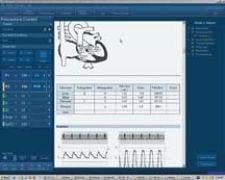
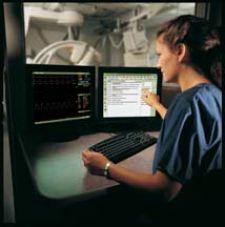

 June 27, 2022
June 27, 2022 

